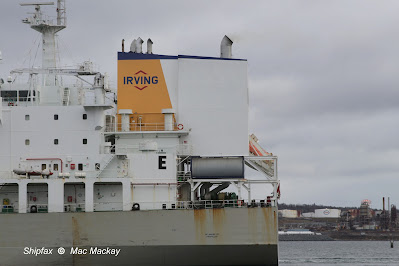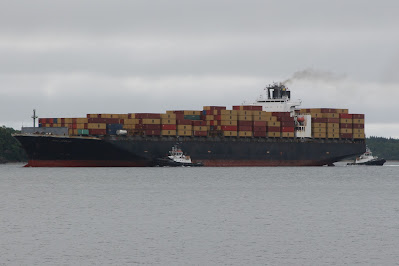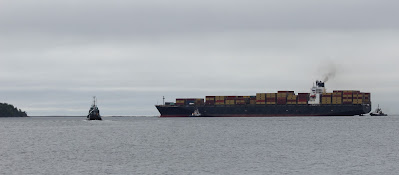Will they ever learn?
Canadian ferry services have been contentious since Confederation (1867 for the record). Just as other governments use hospital and school building as political footballs, so do the federal politicans use ferries. Getting elected by promising, getting re-elected by delivering. The federal government can be accused of the same tactics in all government shipbuilding, but a few years ago they did develop a plan for Navy and Coast Guard ships, which is actually working to deliver overdue replacements. The same planners then apparently went on vacation leaving only a few vague statements about ferries and no firm plans. Due to their high political sensitivity, ferries cannot be left in the hands of civil servants, but must be ham handed by politicians.
As of today there are up to half a dozen sizeable ferries that need replacements in the next year to five years in eastern Canada alone. (Some are provincial, some federal). Old ships must thus carry on with the risk of breakdowns and disruption to essential or near essential services virtually guaranteed.
It is not just an "if it ain't broke don't fix it" mentality that results in the all too common crises. It is more a "don't plan ahead", and "only act in an emergency" scenario. Even though the emergencies are self-inflicted, the pols somehow manage to skew their delayed responses into heroism.
The Prince Edward Island ferry service has been a typical political football, which has again reached a crisis with the only ship out of service for an indefinite period due to a mechanical issue. The Confederation Bridge, which was built as a reliable year round "fixed link" to the mainland replaced the primary ferry service between Cape Tormentine, NB and Borden, PE. The bridge has certainly proven to be a success and is only closed to traffic during especially severe weather. (Being a public /private partnership likely helps too.). However it does not serve the eastern end of the island and northern Nova Scotia as readily, nor does it provide the seagoing experience enjoyed by tourists.
The John Hamilton Grey works it way toward Cape Tormentine in spring ice with the Confederation Bridge nearing completion in the background. The ferry was retired a month later.
The ferry operation at the eastern end of the island, between Caribou, NS and Wood Islands, PE was initially promoted in the 1930s by local businesses and since the opening of the Confederation Bridge, has continued to be a useful, if secondary connection. It is a seasonal operation from May to December, and until last year had two ferries - one of which only operated during the peak tourist season. One of its major sources of revenue, aside from passengers, is trucking produce from Prince Edward Island to the Port of Halifax. (The ships are owned by the federal Minister of Transport and managed by the private company Northumberland Ferries Ltd).
The late lamented Holiday Island. Built orginally for summer service on the Cape Tormentine / Borden route.
However there were signs of trouble as long ago as 2020 when the reliability of the ships came into question - largely due to their age - and the larger of the two ships was taken out of service for a time. Things came to a head last year when the older and smaller ship Holiday Island caught fire July 22 and became a total loss. That left the Confederation to soldier on alone for a time. Luckily the ferry Saaremaa 1 was available in Quebec and managers Northumberland Ferries Ltd (NFL) scrambled to orient crews, and adapt the ship and the terminals, thus salvaging some of the sailing season. (Quebec's ferry horror stories are outside the realm of this blog, but the provincial government owned Société des traversiers du Québec (STQ) has had its own crises in recent years. The Saaremaa 1 was acquired by the STQ as a back-up for the temperamental F.-A.-Gauthier on the Matane / Baie Comeau / Godbout route.)
The use of the Saarema 1 came with some strings attached. If the STQ needed the Saarema 1 they could call it back at any time. Fortunately the F.-A.-Gauthier behaved for the rest of the 2022 season and the Saaremaa I was not needed in Quebec.
For 2023 the Saaremaa 1 is again available, on the same conditional terms, but for some strange reason went into drydock at Méchins, QC on about June 8 - just when it should have been mobilized for the PEI tourist season. Instead it was initially reported that it would not be available until July 10, but even that date is now in doubt.
Supposedly a permanent replacement for the Holiday Island was in the works last year, and had been for some time, but no contract has been awarded for construction, so it could be up to five years before a new ship is available*. When on June 17 of this year the Confederation suffered a mechanical issue and was thus inoperable, there was no alternative but to cancel all service until further notice. Not only does this impact the PEI tourism sector (a major part of the island's revenue) but trucking produce away from the island and bringing in material, such as aggregates, is severely hsampered. The added time and cost of using the Confederation bridge will eat into many other aspects of the province's economy.
The problem with the Confederation has been described as the failure of a mechanical flexible coupling in the ship's drive train. Since the part is not "off the shelf" anymore a replacement must be custom made, with an estimate of at least a month, not including installation.
If memory serves, the flexible coupling was part of a propulsion system designed to be installed by shipyards of limited technical expertise. Shaft alignment requires a high level of precision which not all shipyards can offer. The flexible coupling allows for looser tolerances, but is subject to a high degree of wear - such was the trade off for construction of the ship orginally - and thereby hangs a tale.
The legend has it that the revered member of federal parliament for the Pictou area stood before a gathering and announced a new ferry and that it would be built at the local Pictou Industries Ltd shipyard. Since the federal Department of Transport would own (and therefore pay for) the ship it was assumed that the project had the approval of federal Cabinet and the Prime Minister. It transpires however that they all learned about the project at the same time as the assembled voters at the meeting. The member announcing the new ship and naming its builder, did so on his own initiative (or so the story goes) as part of a promise to his mother.
The problem was that the project was well beyond the shipyard's recent experience. The shipyard in Pictou had a storied history and had built many ships including ferries, under previous owner ship, but much of the experise had retired or moved on. Although Pictou Industries Ltd had built some trawlers too, but not for several years, it had become essentially a repair yard.
In order to build the ship in Pictou, I understand that an arrangement was made with a European shipbuilder to design the ship for ease of construction and perhaps even pre-fab some critical components. That meant the Pictou yard's role was more to assemble and finish out the ship, and to install some of the more demanding pre-fab components. Hence the flexible coupling that allowed for looser tolerances in shaft alignment.
Now of course the Confederation, as it has been called, is thirty (!) years old and some of that high degree of wear has taken its toll. It is a "double ender" with central engines and propulsors at both ends allowing it to enter and leave terminals without turning.
Despite the current "crisis" there has still been no announcement** about a permanent Holiday Island replacement or even better, a Confederation replacement (thirty years is old even for a seasonal ferry). Plus ça change!
Perhaps some inspired politician will address a public meeting somewhere during his summer break ...
Updates:
* A November 29, 2022 annoucement from the government stated that Davie shipyard in Lévis, QC would be designing and building the Holiday Island replacement for delivery in 2028. (One year later than when its funding was announced in the 2019 federal budget.) Davie has experience with inland waters ferry construction including the two dual fuel Baie-Ste-Catherine / Tadoussac ferries delivered in 2018 (which took at least five years to design and build.)
** I should have written "recent" announcement - because while I was writing it there was a new communication from Transport Canada. News reports on June 28 state that Transport Canada reaffirmed the 2028 delivery date, and that the ship will be a diesel and electric hybrid. It is currently in the design stage at the Davie shipyard.
2. There was no mention of a Confederation replacement. My guess is that the Holiday Island replacement may be a bare bones type, useful for peak summer / good weather service only. The Confederation replacement will have to be a more substantial vessel capable of working from May to December. If so, it will serve as a useful political football with a series of announcements, promised delivery dates and shipyard selections stretching out into the 2030s. By then the Confederation will be forty years old, will have broken down countless more times and service will have been irregular. It may force the government to acquire a second hand vessel from Europe or some other desperate measure.
3. A sitting government MP from PEI, Lawrence MacAulay, was also quoted as saying that the Saaremaa 1 has been engaged again for 2024, but that he "hopes" it will be ready before July. Obviously he was not willing to make unilateral committments for his government. Good boy.
.








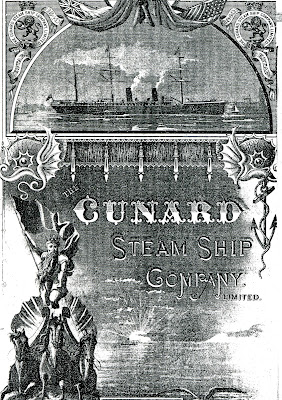

















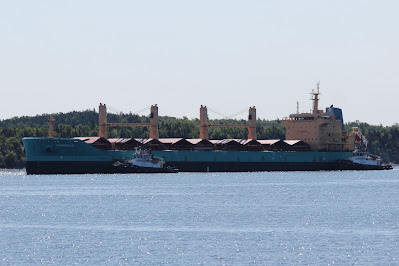





.JPG)







